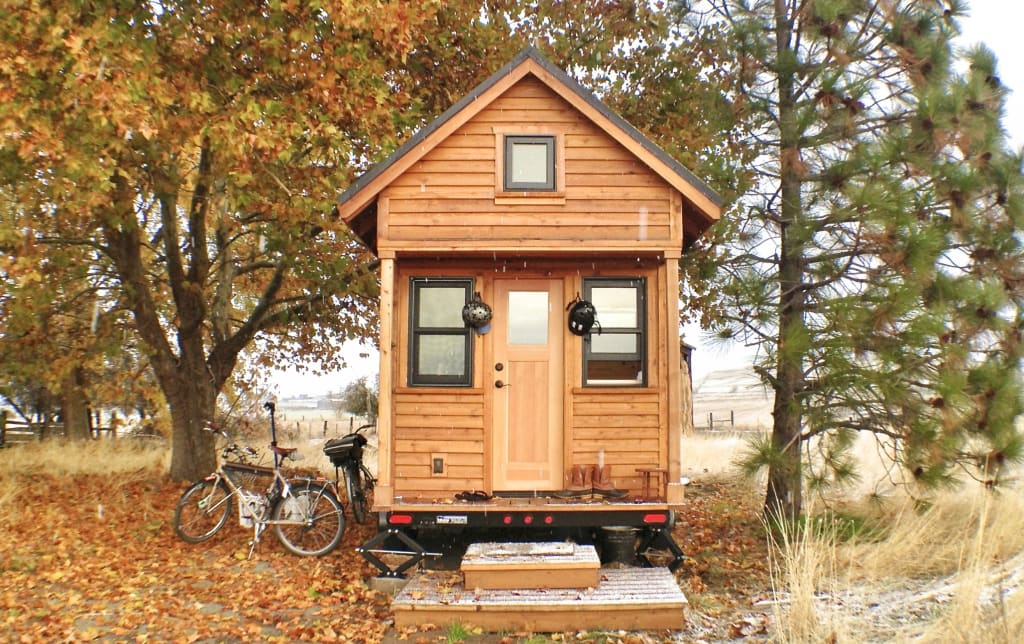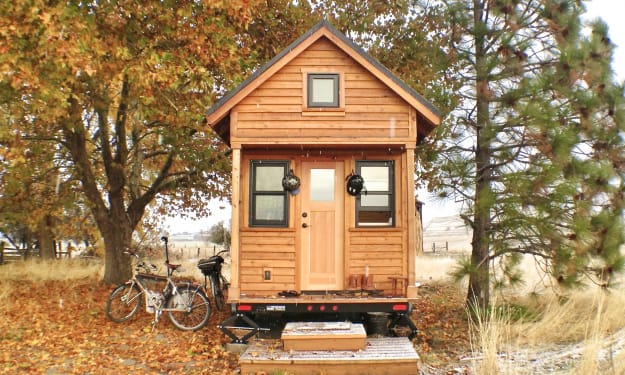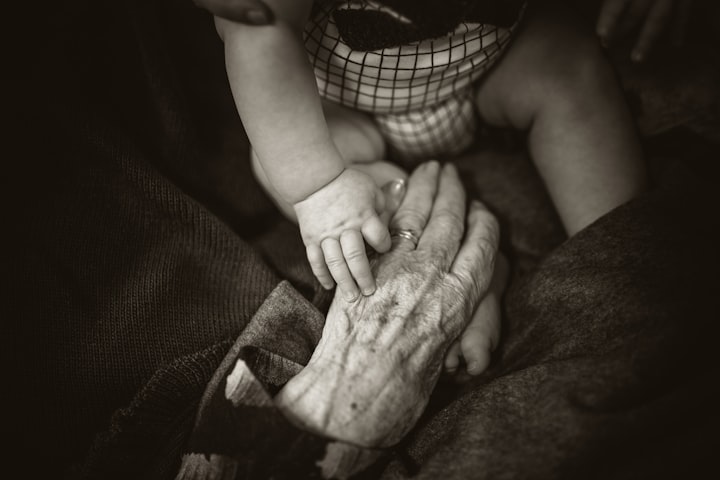The Big Future of Tiny Houses, Part 5
To buy, or not to buy? That is the question.

Tiny homes are distinctive in that they need to be fully customised to the owner's lifestyle, needs and priorities. Finding the perfect design can be difficult, so many people choose to build their tiny house, either with a contractor or as a DIY project. However, embarking on your own building project comes with its own caveats as well.
Building up to it
If you're building a tiny house on foundations, you'll need to obtain the proper permits from your local council and get the 'okay' from the zoning board before the first nail can be hammered into place. In some towns, this can be a lengthy and challenging process, as tiny houses aren't really recognised bureaucratically yet. Your best bet is to enter into a dialogue with the relevant authorities, and maybe buy them a bottle of wine. You'll also probably end up paying any number of fees, which might eventually defeat the point of going tiny in the first place.
Tiny houses on foundations must furthermore be connected to the town's electrical, water and sewer systems.
You shouldn't have any of these issues when building a tiny house on wheels. If you do infringe any regulations, authorities will simply move you on, rather than seizing your home.
Inner Beauty
As well as constructing the frame of your tiny home, the interior will also be up to you.
The key to maximising the usable space in a smaller surface area is smart design. As much as possible, spaces need to perform more than one function while occupying as little room as possible.
Some architects and interior designers actually specialise in designing for tiny living, building up a repertoire of plans tailored to small spaces. See here for some of the top USA tiny house architects! https://www.godownsize.com/tiny-house-architects/.
If you don't want to outsource the design process, familiarise yourself with tiny design by reading or watching tiny living blogs, getting to grips with essential design concepts, and exploring your creative options. An excellent place to start is the 'Living Big in a Tiny House' project, by Bryce Langston: https://www.livingbiginatinyhouse.com/
Even if you buy your tiny house, it's advisable to check insulation, plumbing, gas and electricity systems to make sure they meet your standards.
Insulation is of paramount importance in a tiny build to prevent mould and moisture build-up, as well as to maximise passive temperature control. For a DIY project, foam insulation is most straightforward, but rigid options are also available.
Issues regarding water, sewage and power were discussed in Part 4: Going Underground of this series
To DIY For
Many tiny builds are DIY projects, with homeowners lovingly laying down each plank; just as many are commissioned from professional tiny home building companies. The path you choose depends on your skillset, willingness to take risks, budget and control-freakness.
If you want more control over the cost, the materials used (for example salvage) and general design of your home, you're better off building it yourself or working closely with a builder on a personal level. Using reclaimed materials can significantly lower the cost of building, as well as imbibing your home with more storied character, but it can lengthen the process and make it difficult to project a reliable timeframe.
Companies that take commissions are usually very good at responding to client requirements and specifications, but they also often have pre-existing relationships and deals with manufacturers, as well as fixed prices and design layouts. Research companies thoroughly to determine whether their process lines up with your values from sourcing to production and design.
Outsourcing your build will speed up the process and ensure a much more comfortable experience for you.
Buying Time
Buying an already-built tiny home is, of course, the easiest and fastest option, although you will have to consider aspects like pick-up location, what condition it's in and whether it meets current legal requirements.
Buying a second-hand tiny home is also excellent for the environment!
Your life, your choice
Ultimately, it's completely up to you. You know your priorities, your values, and your limits (although I always advocate pushing these...), and only you can make a choice appropriate to your situation.
Thanks for coming along for the tiny ride!
About the Creator
Chiara Torelli
Student of Life, thalassophile
Multi-national polyglot
Books, outdoor sports, arts and crafts, food and wine/cocktails






Comments
There are no comments for this story
Be the first to respond and start the conversation.